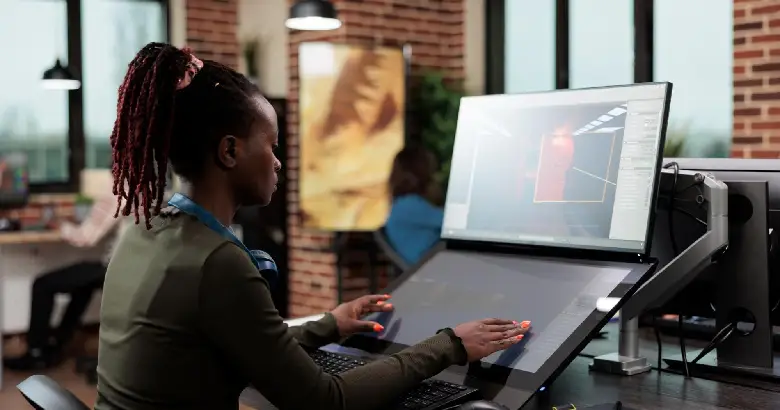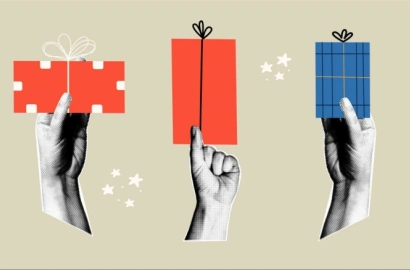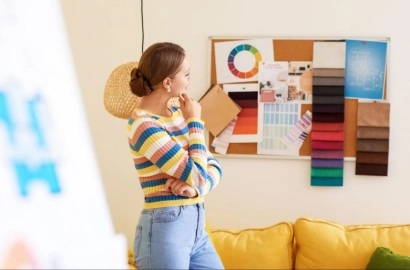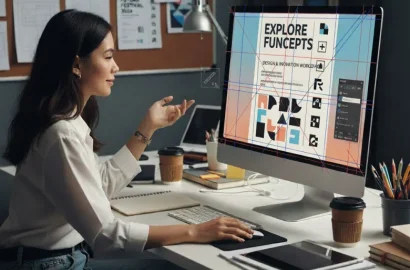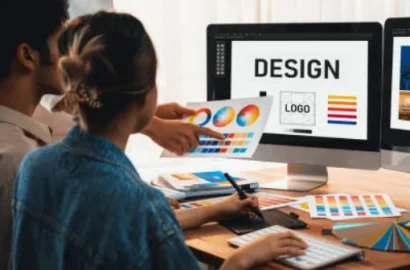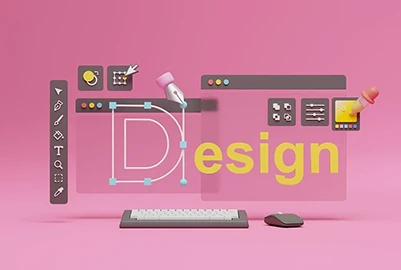Are you curious about environmental graphic design (EGD)? Learn how design shapes the spaces we move through every day, and what it takes to start a career in the field.
Imagine entering a hospital with no signs to guide you. No directions to the emergency room or the ward you need to visit, no floor plans — absolutely no visual cues whatsoever to help you navigate. You’d probably feel lost, anxious, and maybe even unsafe.
The way we experience physical spaces — from museums and airports to office buildings and public parks — is not accidental. Behind the scenes, there’s an entire design discipline dedicated to making those environments more intuitive, functional, and engaging.
Cue environmental graphic design: where visual communication meets architecture, interior design, and wayfinding. It’s a fascinating discipline — and, if you’re considering a career in design, it can make for an incredibly rewarding profession.
But what exactly is EGD and how do you get started in the field?
Keep reading for your ultimate introduction. Here’s what we’ll cover:
- What is environmental graphic design and why does it matter?
- The different types of environmental graphic design
- The key elements of environmental graphic design
- Environmental graphic design examples
- What does an environmental graphic designer do?
- Environmental graphic design jobs and career paths (plus salaries)
- How to get started with environmental graphic design
- Learn more about forging a career in design
Let’s begin with a definition.
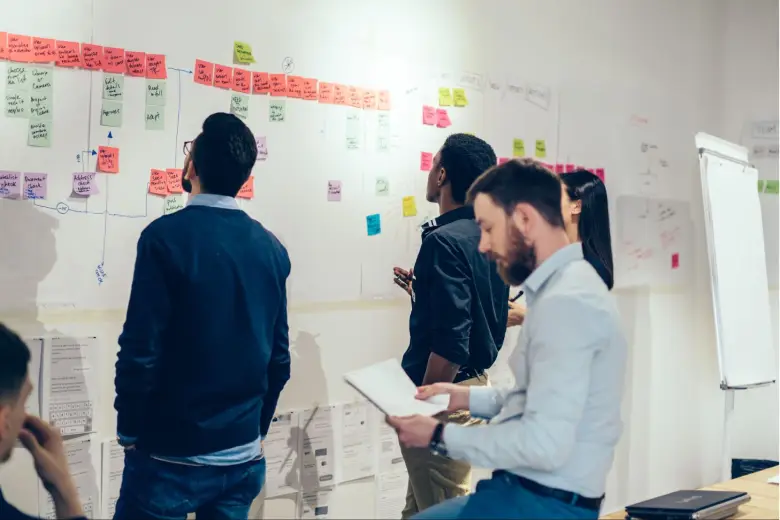
What is environmental graphic design and why does it matter?
Environmental graphic design (EGD) is a multidisciplinary field that combines graphic design, architecture, interior design, and industrial design to create visual experiences within physical spaces.
It’s all about shaping how people interact with their surroundings — through signage, wayfinding systems, branded environments, wall graphics, exhibition design, and more.
The purpose of EGD is both practical and emotional: to help people navigate, understand, and connect with the spaces they visit. Whether it’s directing a visitor through a maze-like university campus or creating an immersive atmosphere in a retail store, environmental graphic design enhances functionality while reinforcing a place’s identity and tone.
And why does that matter?
Well: how we feel in a space has a great influence over how we behave. It can ultimately determine whether we linger and engage — or get frustrated and leave. Just as UI UX design shapes a person’s experience with a digital product, EGD is all about providing a seamless physical experience.
When done well, it turns buildings and public areas into environments that are not only easier to use, but also more meaningful, memorable, and human-centered — something we can all benefit from!
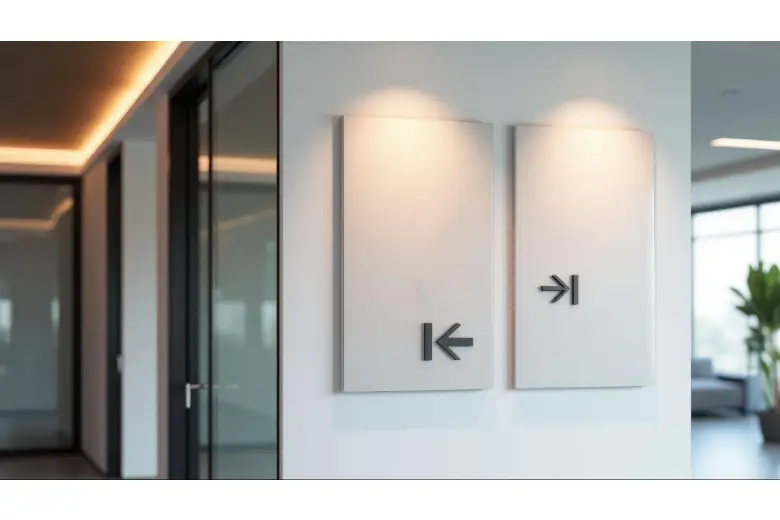
The 5 different types of environmental graphic design
We’ve explained, in broad terms, what environmental graphic design is — but what does it look like in action?
There are many different types of environmental graphic design, depending on the space and the purpose it serves. So let’s explore those now.
1. Wayfinding systems
As the name suggests, wayfinding helps people get from point A to point B with clarity and confidence. Think of signage in an airport that guides you to your gate, or directional graphics in a hospital that help visitors find the correct department. Good wayfinding design reduces confusion, anxiety, and frustration — especially in high-stress or complex environments.
2. Placemaking graphics
Placemaking is all about creating a strong sense of identity and belonging in a space. It includes things like murals, public art, or typographic installations that reflect the character and culture of a community.
For example, a colorful, large-scale graphic in a city plaza might celebrate local history while also making the space more inviting and memorable.
3. Branded environments
These spaces are designed to reflect and reinforce a brand’s identity — think retail stores, corporate offices, and showrooms. Branded graphics, color schemes, and storytelling elements can be used to communicate the personality and values behind a particular brand.
Imagine shopping in a Nike store, for example. You’d expect bold visuals, an energetic layout, and purposeful messaging as part of the branded environment.
4. Exhibition and interpretive design
This type of environmental graphic design focuses on storytelling and guiding visitors through an experience — like a museum, gallery, or cultural institution. Whether it’s a timeline wall at a history museum or interactive panels in a science center, these design choices help to inform, educate, and engage in visually compelling ways.
5. Public installations and experiential graphics
These projects typically combine art, design, and interaction to create environments that surprise and delight — like a motion-activated light display in a park or a temporary art installation at a festival. Experiential graphics can be playful or thought-provoking, but their goal is always to create a lasting emotional impact.
Together, these types of environmental graphic design show how visual storytelling, functionality, and space can come together to shape powerful human experiences.
Now that we’re familiar with the different types of environmental graphic design, let’s look at the individual building blocks that bring these environments to life.

The key elements of environmental graphic design
Whether it’s a wayfinding system in a hospital or a branded experience in a store, every EGD project is made of carefully considered elements that work together to communicate clearly and create a sense of place. These include:
1. Typography
Typography is the art and technique of arranging type — basically, how letters and words are styled and displayed. And it’s not just about aesthetics. In environmental graphic design, all text must be legible from various distances, adaptable to different materials, and accurately reflect the tone of the space.
For example: the font used on a museum wall label might need to convey professionalism and clarity, while signage in a children’s play area could be more whimsical and bold.
To learn more about the role of fonts, check out our ultimate guide to font styles and their families.
2. Color
Color plays a critical role in setting the mood, reinforcing brand identity, and improving readability. It can create hierarchy, guide people’s attention, and even influence how welcoming or safe space feels. In transport hubs, for example, color-coded signage can make navigation faster and more intuitive.
You can learn more about the power of color in our complete guide to color theory.
3. Materials and finishes
The tactile aspect of EGD is just as important as the visual. Materials like glass, wood, metal, vinyl, and digital displays all behave differently — not just in appearance, but in terms of durability, maintenance, and how they interact with lighting. Choosing the right material can greatly enhance a design’s impact and help it stand the test of time.
4. Iconography and imagery
Symbols, illustrations, and imagery help to communicate in a universal language and facilitate understanding at a glance. A well-designed icon system in a multilingual airport, for example, ensures that everyone can find their way — no matter what language they speak.
5. Spatial and environmental context
Environmental graphic designers think three-dimensionally. How will the design interact with architecture, lighting, foot traffic, or sightlines? How does it scale across a space — from eye-level signage to overhead displays?
Considering the physical and sensory aspects of a space is essential to ensuring that the design works in the real world, not just on paper.
When all these elements come together, you get more than just a visually appealing space. You create an entire experience that communicates clearly, feels cohesive, and resonates with the people who move through it.
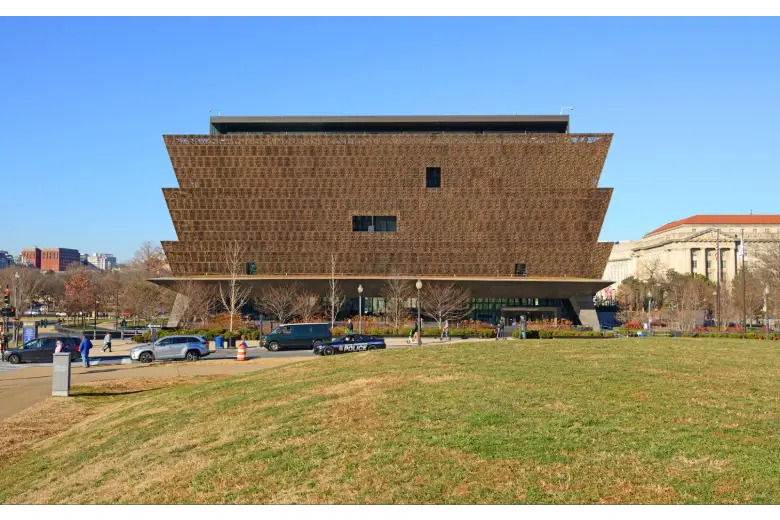
Environmental graphic design examples
We’ve covered the theory behind environmental graphic design — so now let’s bring it to life with some real-world examples.
1. Transit systems: The London Underground
One of the most iconic examples of wayfinding design, the London Underground combines color-coded lines, consistent typography, and universally recognized symbols to guide millions of commuters daily.
The system’s legendary Tube map, originally designed by Harry Beck, isn’t geographically accurate — but it works beautifully because of its clarity and logic. Every design detail is geared toward helping users navigate a complex network with ease. That’s excellent EGD in action!
2. Museums: The National Museum of African American History and Culture, Washington, D.C.
This museum is a powerful example of exhibition and interpretive design. Its graphics don’t just label artifacts — they tell layered stories across generations, using typography, imagery, and multimedia to engage visitors on both emotional and intellectual levels. The spatial flow and visual design work hand in hand to create a deeply immersive experience.
3. Corporate spaces: Google offices worldwide
In Google’s offices around the globe, environmental graphic design plays a big role in shaping company culture and brand identity.
From bold wall graphics to playful signage, and regionally inspired design motifs, each space reflects the company’s values of creativity and innovation. These branded environments are no doubt designed to help foster connection, collaboration, and a strong sense of belonging among employees.
Can you think of any other iconic examples of environmental graphic design? What do your favorite spaces have in common — and how about those that feel badly designed? Pay attention to the spaces around you and how they make you feel; it can teach you a lot about environmental graphic design!
What does an environmental graphic designer do?
We’ve covered environmental graphic design as a discipline — but what’s it like from a career perspective?
Environmental graphic designers sit at the intersection of design, architecture, and communication. They use visual storytelling to shape how we experience physical spaces, using a blend of creativity and practicality, as well as big-picture thinking and pixel-perfect attention to detail.
So how does that break down in terms of everyday tasks? Let’s take a look.
Day-to-day tasks and responsibilities
Environmental graphic designers don’t just make things look good. They’re concerned with functionality, too; helping spaces to work better. Their job is to communicate clearly within an environment — whether that means helping people navigate complex buildings, conveying a brand’s identity, or creating emotional connections through visual storytelling.
No two days are the same, but the core tasks and responsibilities of an environmental graphic designer typically include:
- Meeting with clients, architects, and stakeholders to understand project goals and constraints
- Conducting site visits to assess spatial context and environmental conditions
- Creating mood boards, concept sketches, and design proposals
- Designing signage systems, murals, wall graphics, displays, or branded environments
- Producing detailed artwork files and specifications for production and fabrication
- Collaborating with fabricators, installers, and contractors during implementation
- Reviewing installations to ensure the design functions as intended
Throughout their work, environmental graphic designers often collaborate closely with architects, interior designers, and brand teams — so strong communication is just as important as graphic design skills.
And, of course, it’s important to be proficient in the tools of the trade — which we’ll outline next.
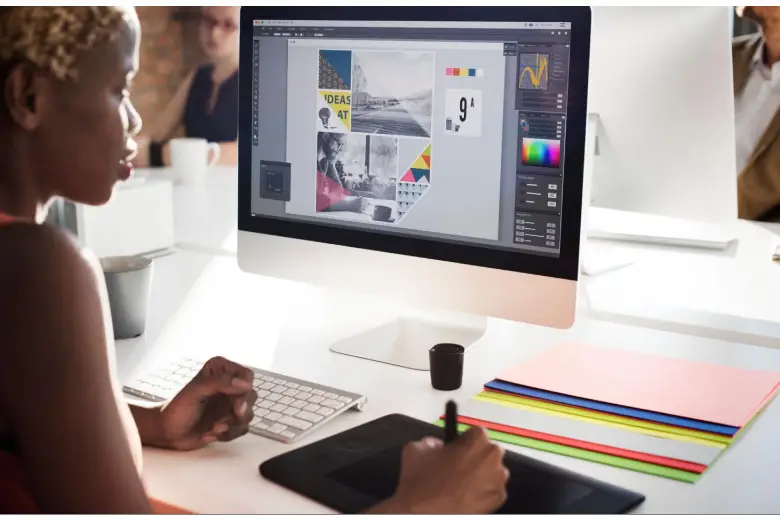
What tools do environmental graphic designers use?
Environmental graphic designers use a mix of traditional and digital tools throughout the design process. Some of the most commonly used tools include:
- Adobe Creative Suite (especially Illustrator, InDesign, and Photoshop) for graphic design and layout
- AutoCAD or Revit for architectural drawings and spatial planning
- SketchUp, Rhino, or 3ds Max for 3D modeling and visualization
- Figma or InVision for prototyping and presenting design systems
- Hand sketching and physical mockups for early ideation
Depending on the studio or type of project, designers might also get involved with digital signage, interactive elements, or AR/VR integrations — expanding the role beyond traditional graphics into the realm of experience design.
Ultimately, being an environmental graphic designer means creating experiences that guide, inform, and connect people in the physical world. It’s a highly collaborative role with real-world impact — and no two projects are ever quite the same. This can make for an incredibly varied and rewarding career path!
Next, let’s explore some common job titles within the field (and their earning potential).

Environmental graphic design jobs and career paths (plus salaries)
A career in environmental graphic design opens the door to a wide variety of creative and strategic roles. Whether you’re interested in hands-on design, project management, or the intersection of technology and spatial storytelling, there’s plenty of room to grow and specialize in this dynamic field.
Let’s explore some popular job titles and pathways in EGD — including their key responsibilities and average pay.
1. Environmental Graphic Designer
This is often an entry-level or mid-level role, ideal for those just starting out in the field.
In this role, you’ll focus on designing signage, wayfinding systems, branded environments, or experiential projects (it all depends on where you work). You’ll typically work under a creative director or a senior designer, collaborating with architects and clients.
The average annual salary for an Environmental Graphic Designer is around $70,000 in the U.S. (Glassdoor) and around ₹9,00,000 in India (also from Glassdoor) — but it varies with experience.
Consider this job title if you enjoy problem-solving through both visuals and spatial thinking, and if you want a versatile and hands-on role.
2. Wayfinding Designer
Wayfinding Designers specialize in creating systems that help people navigate complex spaces, such as hospitals, campuses, or transport hubs. This role blends spatial logic with graphic clarity — an ideal pathway if you love clarity, order, and making chaotic spaces feel intuitive and user-friendly.
The average salary for a Wayfinding Designer in the United States is around $57,000 according to Glassdoor. In India, mid-level wayfinding designers can expect to earn between ₹5L to ₹8L per year (Glassdoor).
3. Experiential Designer / Branded Environments Designer
These roles focus on creating immersive brand experiences in physical spaces — think corporate HQs, retail environments, or cultural installations. Designers in this space often work closely with marketing and branding teams.
In the U.S., the average salary for an Experiential Designer is around $72,000 (Glassdoor). In India, the average salary is around ₹27,50,000 per year (Glassdoor).
If you’re passionate about storytelling, emotional engagement, and blending physical design with brand strategy, this could be a great fit.
4. Exhibit Designer
This role is centered around temporary or permanent installations in museums, galleries, or trade shows. It combines storytelling, spatial planning, and graphic design to shape how visitors engage with content.
According to data from Glassdoor, the average salary for an Exhibit Designer is around $63,000 in the United States. In India, the average salary is around ₹7,90,117 per year (Salary Expert).
Want to design experiences that inform and inspire? Passionate about education and curation? Then this is definitely a career path worth exploring.
5. Senior Environmental Graphic Designer
Once you’ve gained more experience in the field, you might become a Senior Environmental Graphic Designer. At this level, you’ll lead teams, manage projects from concept to implementation, and guide the strategic direction of designs. Experience, leadership, and a deep understanding of user-centered spatial design are key.
In the U.S., Senior Environmental Graphic Designers earn an average of $90,000 per year (Glassdoor). Salary data for this role in India is hard to come by — but, when you consider that mid-level environmental designers earn around ₹9,00,000 per year, you can expect your senior salary to exceed this figure.
As you can see, there are many different options for career growth and flexibility within environmental graphic design. Once you’ve got general experience, you might choose to specialize — focusing on a niche like wayfinding or exhibit design — or take on a more strategic leadership role. Maybe you’ll even go freelance or open your own studio!
But before all that, you first need to learn the essential skills and land your first role. So let’s take a look at how to get started.
How to get started with environmental graphic design
You don’t need to follow a linear pathway to break into environmental graphic design — everyone brings their unique perspectives and experiences to the field. However, there are some key skills and steps that will set you off on the right track, which we’ll outline now.
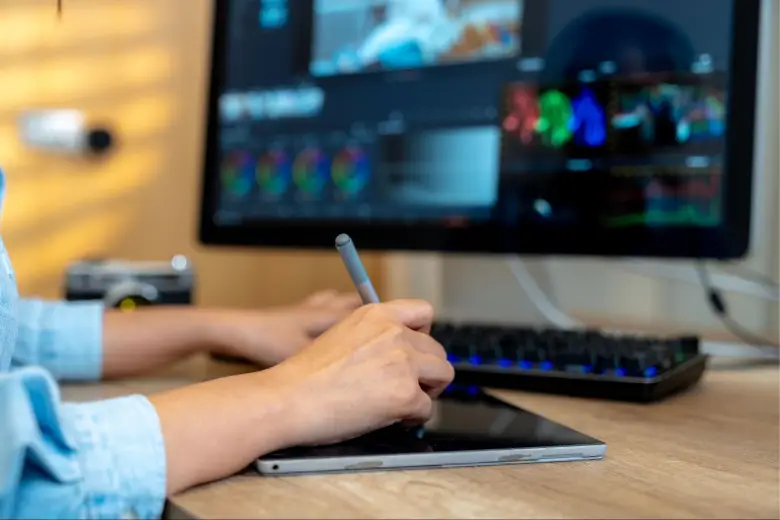
1. Build a foundation in graphic design principles
Start with the basics: color theory, typography, composition, layout, and branding. These are the core building blocks of environmental graphic design, and developing a strong visual eye is essential.
If you’re completely new to design, online courses or short certifications in graphic design can provide a great starting point. Check out AND Academy’s graphic design courses, and browse this round-up of free graphic design tutorials.
2. Learn about spatial thinking
Environmental graphic design isn’t just about visuals — it’s about how those visuals interact with physical space. Try studying basic architectural drawings, floor plans, or even interior design concepts to understand how environments are structured. Software like SketchUp or Adobe Dimension can help you start visualizing designs in 3D.
3. Build proficiency in industry-standard tools
Get comfortable with design software like Adobe Illustrator, InDesign, and Photoshop. For spatial layouts or mock-ups, tools like AutoCAD, Revit, or Rhino are often used in architectural collaborations. Don’t worry about mastering them all at once — start with the design basics and grow from there, getting as much hands-on practice as possible.
4. Work on small, practical projects
Try creating wayfinding systems, signage mock-ups, or branding for real or imagined spaces — like a café, museum, or co-working space. These self-initiated projects are not only excellent practice; they’re also great for building your portfolio. And don’t fixate on perfection; the goal at this stage is to hone your practical skills, grasp different techniques, and build your confidence — and that often requires making some mistakes!
5. Study real-world examples
Move through a public space and take note of how signage guides you, how branding is integrated into the environment, or how exhibitions tell a story. Then, reverse-engineer the thinking behind those designs. What worked? What could be improved? This is a great way to translate what you’re learning into real-world contexts.
6. Build a portfolio that shows spatial thinking
When you’re ready to apply for internships or junior roles, put together a portfolio that highlights your ability to design for physical environments. Include sketches, mock-ups, and your design rationale. Even conceptual or student projects are great at this stage — what matters most is how you think and solve problems through design.
Learn more: How To Create a Graphic Design Portfolio That Will Get You Hired (With Examples).
7. Stay curious and keep learning
Environmental graphic design is a constantly evolving field, often shaped by new technology, sustainability practices, and changing human behaviors. Stay inspired and up-to-date by following design studios, reading case studies, and staying connected with the wider design community.
Learn more about forging a career in design
Environmental graphic design is more than just making spaces look good — it’s about creating meaningful experiences, guiding people through unfamiliar places, and bringing brands and stories to life in the built environment. Whether you’re just discovering the field or seriously considering it as a career, you’ll find plenty of opportunities to learn, grow, and explore.
If you’re curious about what other career paths are available once you’ve mastered fundamental design skills, check out the following:
- An In-Depth Guide to the Top Graphic Design Jobs in 2025 (and Their Salaries)
- What Is Visual Communication Design and What Does a Visual Communication Designer Do?
- How To Become a Motion Graphic Designer: Your Ultimate Career Guide
You can also check out this project by AND Learner, Sant Kaur, to get inspiration for your next graphic design project!
Next Steps
In case you need further assistance, consider the following options to learn more about graphic design.
- Watch this session by design veteran and AND’s Academic Head, Prachi Mittal, and our Course Lead, Soumya Tiwari.
- Talk to a course advisor to discuss how you can transform your career with one of our courses.
- Pursue our Graphic Design courses – all courses are taught through live, interactive classes by industry experts, and some even offer a Job Guarantee.
- Take advantage of the scholarship and funding options that come with our courses to overcome any financial hurdle on the path of your career transformation.
Note: All information and/or data from external sources is believed to be accurate as of the date of publication.

